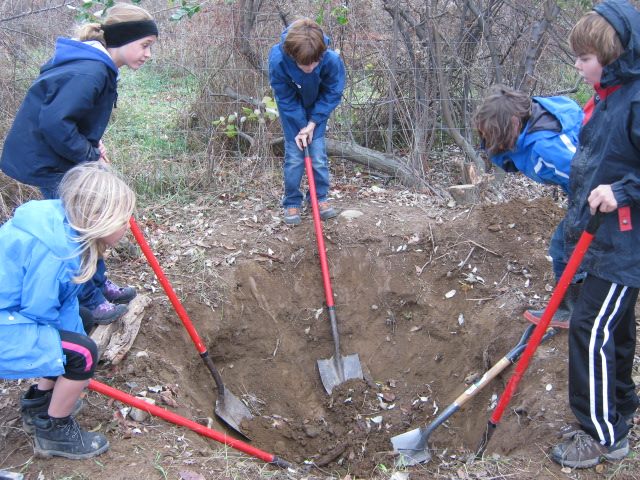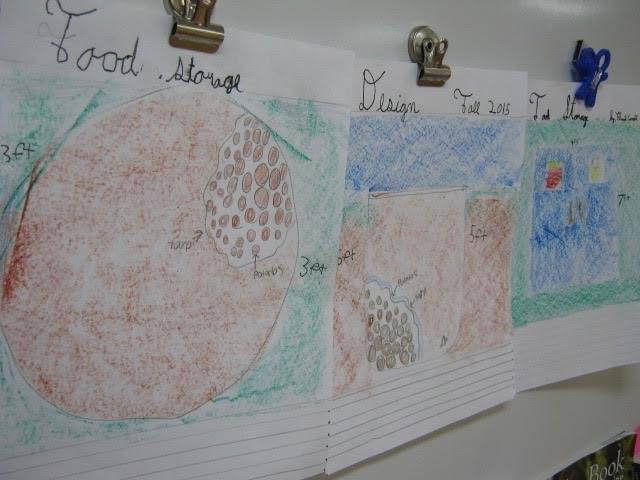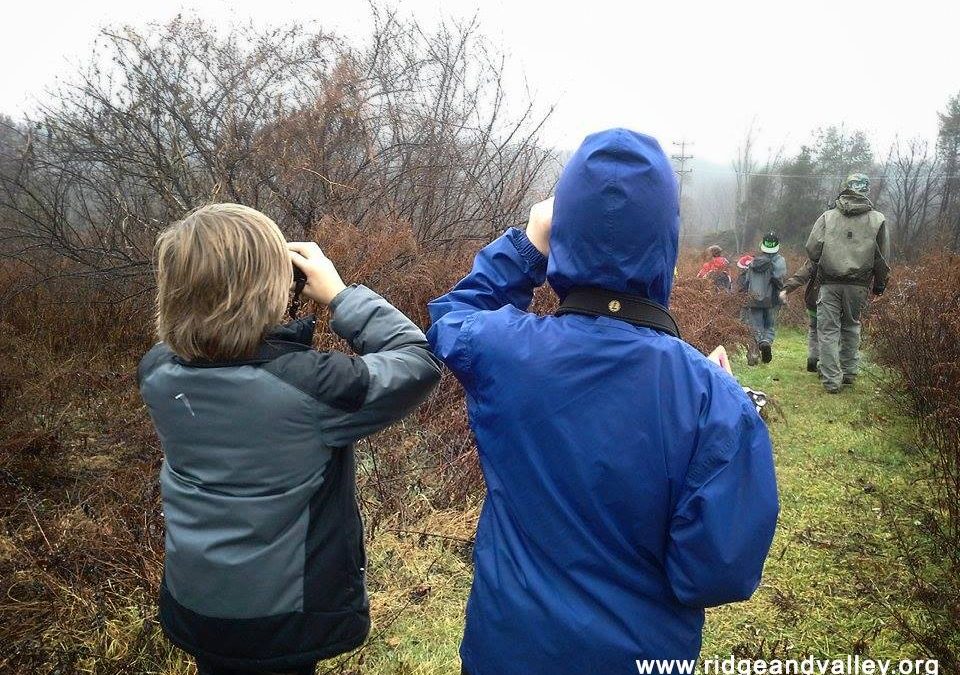
by RVCS | Sep 25, 2017 | Integrative Learning
Ridge and Valley Charter School is based on the assumption that human beings are a thread in the miraculous web of life supported by a living universe and that we as humans have a profound responsibility to respect the Earth. The school’s primary focus and mission is centered on ecological literacy and sustainability. At Ridge and Valley the children learn to make choices in their lives that promote the long-term health of the planet and, therefore, themselves. Each child is cherished and respected, and their creativity is nurtured and supported.
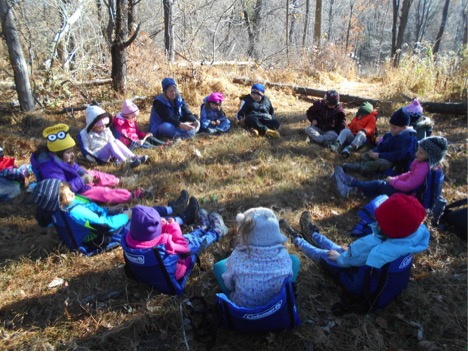
The curriculum uses the universe and earth as the context for learning. Students are encouraged to develop critical thinking skills, to challenge traditional assumptions and derive new models for honoring the world around them. The innovative, progressive program is highly experiential, allowing children to learn using project-based and hands-on experiences, often set out-of-doors in the local bioregion and within multi-aged groups. The expeditionary curriculum, offering ever-expanding regional experiences, increases in complexity across the grades and provides regular opportunities for in-the-field application of skills and knowledge. Using this experiential approach, the students meet and exceed the New Jersey Student Learning Standards set by the state Board of Education.
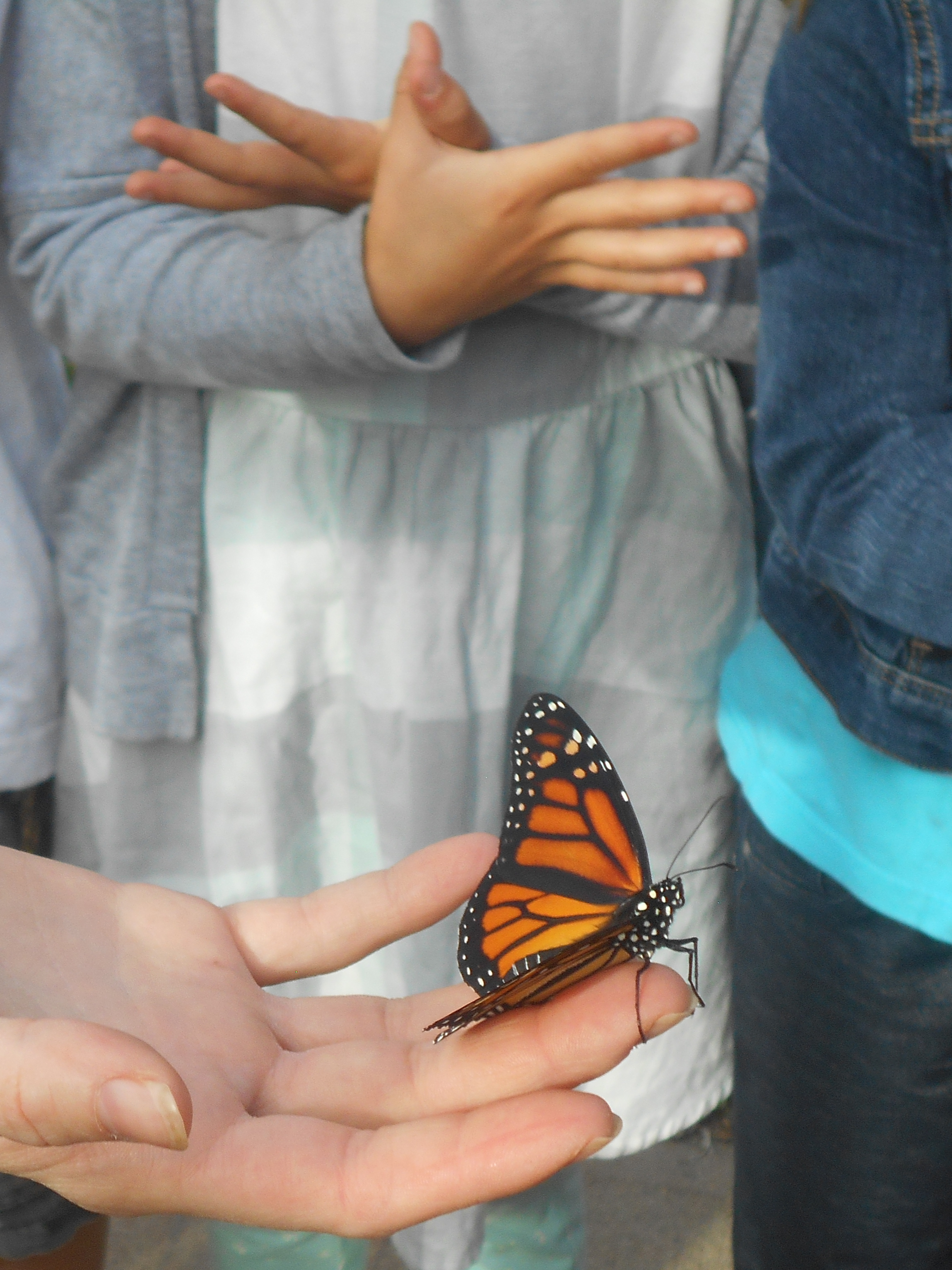
The school structure is student-centered with staff referred to as “Guides” rather than teachers. Beyond all mandated state tests, learner assessment primarily consists of projects, presentations, service learning, portfolios and rubrics, rather than traditional, one-dimensional paper and pencil formats. Feedback is provided to, and created by, the students in the form of holistic student self-reflections and Guide narratives. Additionally, Ridge and Valley collects non-traditional data on mission-specific goals such as self-directed learning, social-emotional learning and expeditionary skills.
The school founders and Trustees, a group of local parents embedded in the community with grassroots organizational backgrounds, are committed to a non-hierarchical governance structure. The school leaders are considered coordinators and work by consensus building and empowerment of staff talent. This perspective is mirrored in the children’s experience where relationship building is an integral part of the program, based in the school’s formal circle governance structures. The school encourages active participation of students and parents in shaping the educational experience and strives to build a stronger community both inside the school and beyond the school walls.
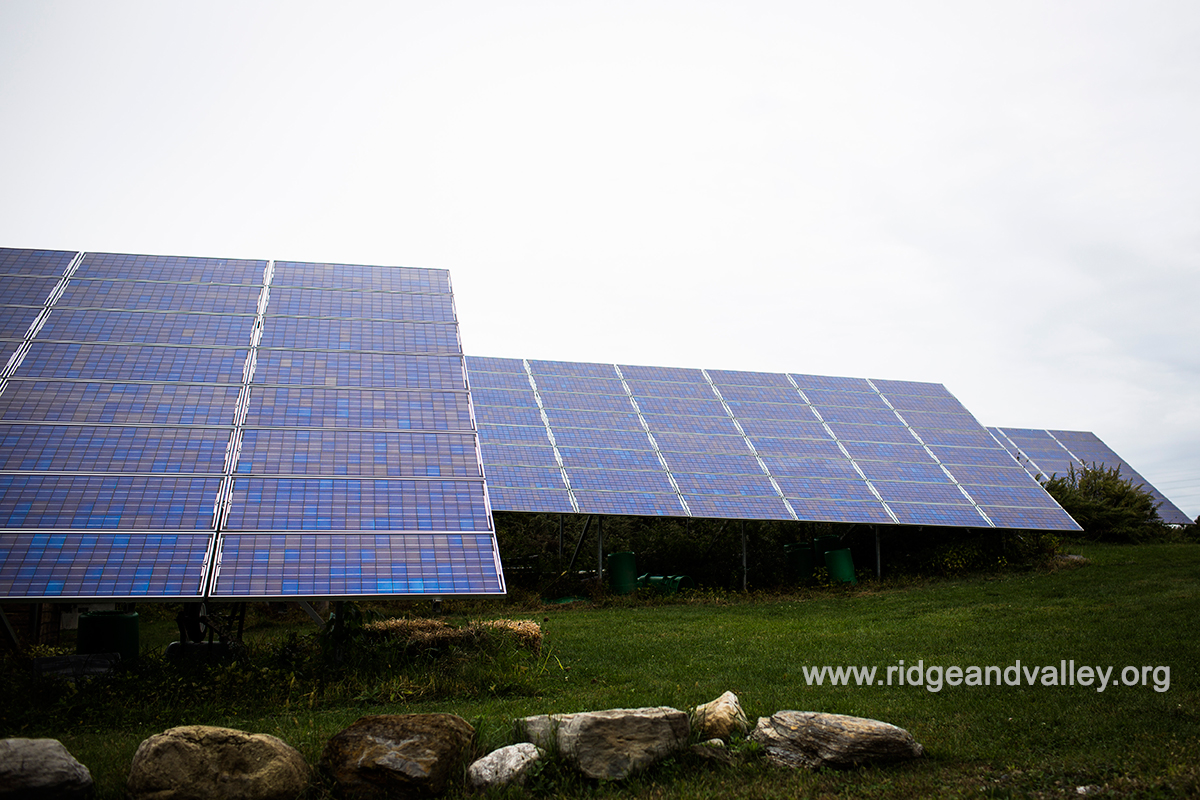
The mission is further modeled and expressed at the school facility through several sustainability principles and practices, including the use of previously used modular classrooms; installation of “green” carpets and linoleum floors; installation of full spectrum daylight lighting through a NJ Smart Start Buildings Grant through the NJ Clean Energy Program in 2008; solar panels for electricity production installed 2004; rain garden built in conjunction with Rutgers University in 2011 to mitigate stormwater runoff into local watersheds; rain barrels to capture roof water runoff installed in 2004; native species focus for landscaping; use of Integrated Pest Management principles; organic garden and orchard; classroom compost program; TerraCycle program to keep packaging out of the waste stream; pack in-pack out lunch program; and use of non-toxic cleaning products.
About Ridge and Valley Charter School
Local community members established Ridge and Valley Charter School to pursue innovative and personal excellence oriented teaching methods within the public school system, gaining approval of the school’s charter in 2002 and opening the school for students in the 2004-2005 academic year.
Ridge and Valley Charter School is a public K-8 school of choice that provides students an education for a hopeful sustainable future. Our educational program and curriculum honors children as individuals and emphasizes personal excellence, hands-on experiential education, self-directed and outdoor learning, project-based learning, earth literacy, bioregional studies – all in the context of our 13.7 billion-year-old Universe.
RVCS is a tuition-free public school that follows NJ state education standards and testing requirements within the context of our mission.
Want to Learn More? RSVP for our next Information Night on Thursday, October 5th, 2017 at 7 p.m. by calling Jen Ross @ 908-362-1114
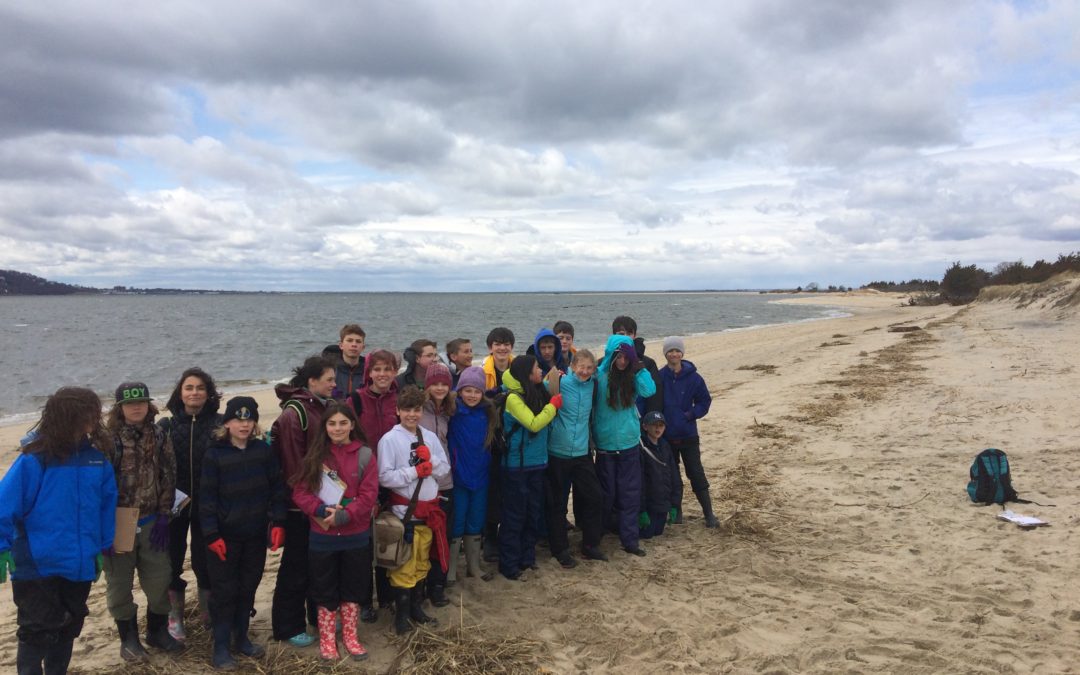
by Dan Egan | May 11, 2017 | Integrative Learning
Throughout this past winter, student scholars at Ridge and Valley Charter School explored ocean currents, climate, and plastic pollution. Students read, researched, and learned about plastic pollution, focusing on single-use plastic items which make their way into our ocean systems. They looked at the policies of a number of other states, as well as other countries, which impose single-use plastic bag bans at grocery stores, restaurants, and retail stores. The students also learned about the proposed bag tax in New Jersey. They then researched the topic of plastic bags and crafted argumentative essays detailing their positions on the issue of a plastic bag ban in New Jersey.
Ridge and Valley Charter School Service Learning Project with Clean Ocean Action
As part of this study, the school partnered with the Sandy Hook based organization Clean Ocean Action, a leading national and regional voice working to protect waterways along the NJ/NY coast using science, law, research, education, and citizen action. The student scientists traveled to Sandy Hook on Friday, April 7, 2017, to complete a service learning project on the beach. They participated in a “beach sweep” to collect and study debris and nonpoint-source polluted garbage brought to shore from coastal currents. According to the Environmental Protection Agency, “nonpoint source pollution is caused by rainfall or snowmelt moving over and through the ground. As the runoff moves, it picks up and carries away natural and human-made pollutants, finally depositing them into lakes, rivers, wetlands, coastal waters and ground waters.” Each piece of debris was identified and documented using data sheets provided by Clean Ocean Action to quantify the different types of pollution washing ashore. Clean Ocean Action creates annual reports detailing the data from clean-ups throughout the year which can be found on their website.
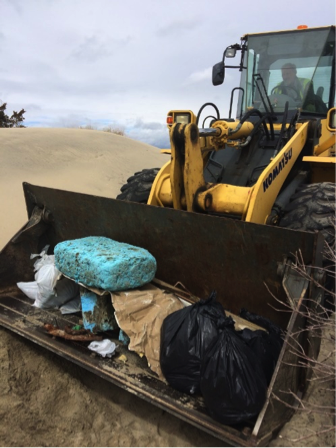
Real-World Experience Connected to Academic Studies
Braving high winds, cold temperatures, and rain, the 24 students collected nearly 200 pounds of debris. The majority of this debris consisted of single-use plastic pieces ranging from bottle caps to straws, including foam pieces of coffee cups. Students also noticed that exposed to the sun and elements, these usually rigid plastic pieces were brittle and, due to the plastic’s ability to photodegrade or break down into small pieces when exposed to sunlight over time, disintegrated into smaller pieces of micro-plastic which were difficult to collect. Studies by the World Economic Forum give estimates that plastic pollution in our oceans will outnumber fish by the year 2050.
This opportunity provided the students with real-world experience connected to their academic studies, a greater sense of purpose for their learning, and opportunities to build skills in math, science, collaboration, and communication while witnessing and experiencing an environmental threat.
A Student Essay Supporting a Ban on Single-Use Plastic Bags in New Jersey:
Every year, about one and a half trillion plastic bags are used, as stated by the Environmental Protection Agency. The goal of the EPA is to protect the “health of humans and the environment.” These plastic bags are all single-use, meaning they usually have a one-time use and then are thrown away. A few alternatives would be reusable shopping bags and bringing back your previous single-use plastic bags or paper bags. Banning single-use plastic bags in New Jersey will bring a positive outcome because plastic bags harm wildlife, are virtually indestructible, and manufacturing can damage our air and the environment. 
For instance, plastic bags can float around in the wind because they are so light, getting entangled in bushes, trees, or even animals. They can even be consumed by either land or water species. Others may say that the animals shouldn’t be eating the plastic because it is not their natural diet. However, turtles, especially, will mistake the plastic bags for jellyfish causing blockages in their digestive system. According to the center for Biological Diversity, which is helping to conserve the land and waters for all different species, “100,000 marine animals die annually from plastic bags.” It can take a tremendous amount of money to just clean up the plastic bags and other littered garbage in our waterways, costing $428 million a year for the state of California, according to the Natural Resources Defense Council whose mission is to allow everybody to clean air, water, and wild. This is important because it could take a significant toll on the animals of New Jersey, endangering their health and their environment. We need to help by cleaning up the plastic bags, in order to make a safe habitat for the animals and plants.
In addition, plastic is virtually indestructible because it photodegrades from the sun. According to the documentary Plastic Paradise by Angela Sun, a film about how plastic affects animals and plants health, but also her experience learning about where plastic is created from, “photodegrade” means the plastic breaks into smaller and smaller fragments of plastic when exposed to sunlight. This can be even more harmful to the animals because it can be easier for them to consume and digest and then pass its way up the food chain. It is easy to think that plastic, like almost everything else, biodegrades, but when you look at the facts, it shows that it never actually goes away. It is another great reason to ban single-use plastic bags in New Jersey because this plastic could eventually make its way into our bodies.
In fact, plastic bags are made from fossil fuels which are non-renewable. They also take large amounts of water and energy to manufacture and ship them. During the process, billions of pound of waste and millions of tons of CO2 are left each year in the United States. ReuseThisBag.com, has been around for ten years and makes bags that are reusable. They state that each minute, we use one million plastic bags. All of this adds up over time because these plastic bags all need to go somewhere. Critics of the plastic bag ban may argue that most people recycle their plastic bags, however, according to Plastic Paradise, only one out seven bags are recycled, whereas the others are thrown away, ending up in landfills or as litter.
All in all, we should particularly ban single-use plastic bags in New Jersey because plastic bags harm the wildlife, are virtually indestructible, and manufacturing can damage our air and environment. By banning single-use plastic bags in our state it will help the environment, save money by stopping the manufacturing of bags, and we will minimize plastic pollution in New Jersey. If we don’t start banning single-use plastic bags now, there will be an enormous amount of plastic bags in the future, particularly in our rivers and ocean, not just in our landfills. Together, we can help support this idea by reducing the amount of any kinds of single-use plastics and stick to reusable bags.
7th Grade Student
Ridge and Valley Charter School
1234 State Route 94
Blairstown, New Jersey 07825
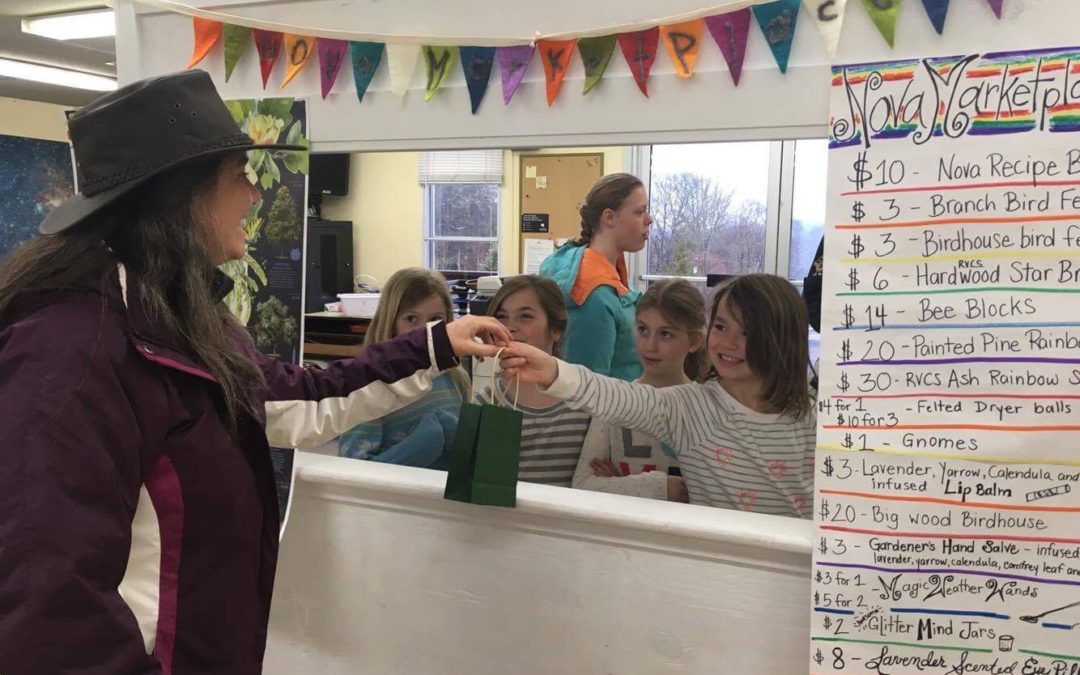
by RVCS | May 9, 2017 | Integrative Learning, Natural World
Ridge and Valley Charter School Students put their Education to Good Use
Ridge and Valley Charter School (RVCS) 2nd and 3rd grade Nova Team students have been planning for their upcoming overnight expedition to Pocono Environmental Expedition Center (PEEC) in Dingman’s Ferry, PA. They successfully developed a strategy to raise money for the trip by hosting a student-led market where they sold handmade goods to the school community. This was a great lesson in planning and execution for these young entrepreneurs.
Overnight expeditionary experiences like the PEEC trip are embedded into the RVCS curriculum, from kindergarten through graduation, and offer some of the most important and exciting opportunities to its students. Not only are these experiences a critical element in the development of self-confidence and a love of the natural world, but they also provide a rich, integrated way to learn and apply the skills and knowledge that the students are studying throughout the year.
Creating a school market to fundraise for the trip was closely tied to the mission and foundational principles of the school which includes student-led and experiential learning, integrated curriculum and ecological literacy.
Student-Led Learning
RVCS students are placed at the center of their own learning and are empowered to make decisions for themselves. RVCS and families partner to fund student trips. The Nova Team students decided to offset the family cost and were inspired to fundraise for their special trip. They came up with the idea to create a student-led market at the school where they could sell handmade items to students, families and teachers. They took the idea from inception to fruition with great success.
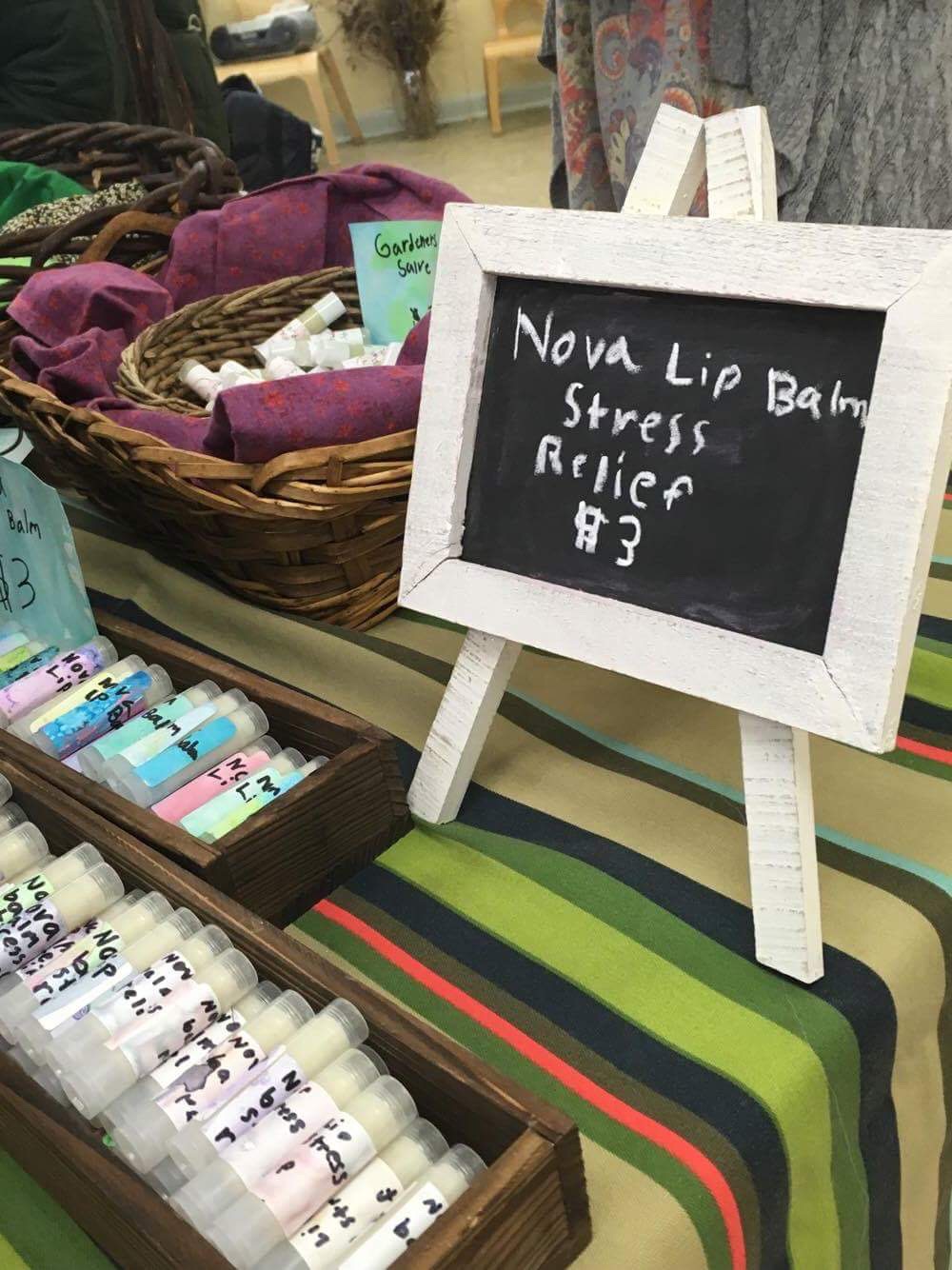
Experiential Learning
Art, crafting, building and creating are woven into the curriculum at RVCS so the students are adept at making beautiful creations that could be appealing to consumers. The students, in a circle meeting format unique to the school, brainstormed what they wanted to make and how to structure the market. They planned, organized, agreed on prices and set up the market as if they were the owners of a real store. They then worked at the market, interacted with customers, communicated about the products and handled the financial side of receiving and counting money.
Experiential learning like this occurs when students are placed in a situation where they think and interact, learn in and from a real-world environment. While traditional teaching and learning are typically teacher-directed, content-driven, text-oriented and classroom-based, experiential learning involves active participation of the student in planning, development and execution of learning activities, is shaped by the problems and pressures arising from the real-world situation and occurs most effectively outside the classroom.
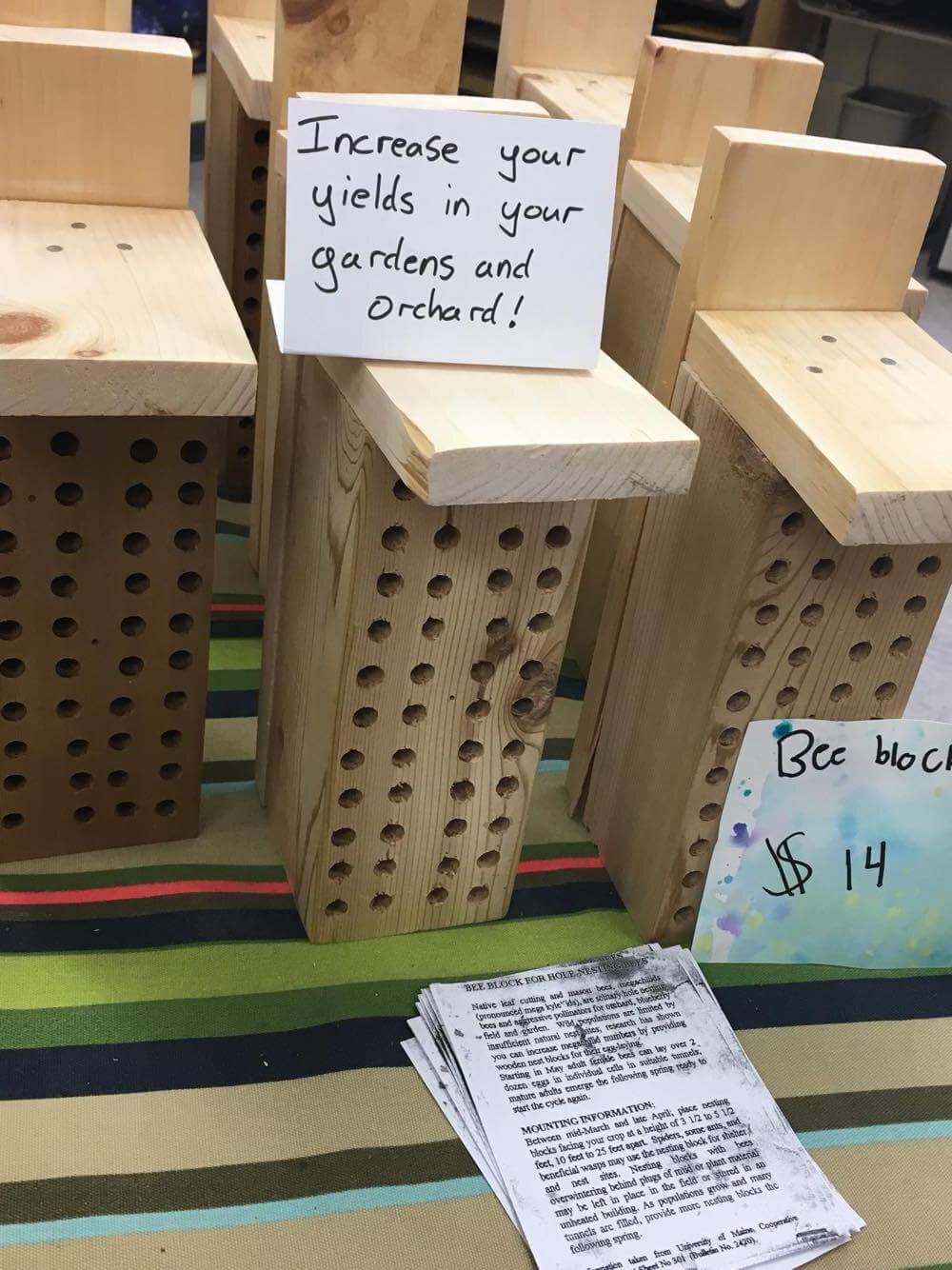
Integrated Curriculum
Students at RVCS build cross-discipline skills that integrate subject matter through hands-on experiential activities that activate a wide range of sensibilities, skills and awareness. It’s a way of teaching and learning that does not depend on the usual division of knowledge into separate subjects.
The students used their math, language arts, science, and communication skills simultaneously in just about every aspect of the market. Much of what they sold had a connection to what they learned this year. Some of the items they decided to make were bird feeders, bee blocks, a class recipe book, star braid looms made from wood harvested at the school, natural dryer balls, herb infused lip balm, gardener’s hand salve and weather wands, a result of their study of weather cycles, local bird habitats, cooking, gardening, math and language arts.
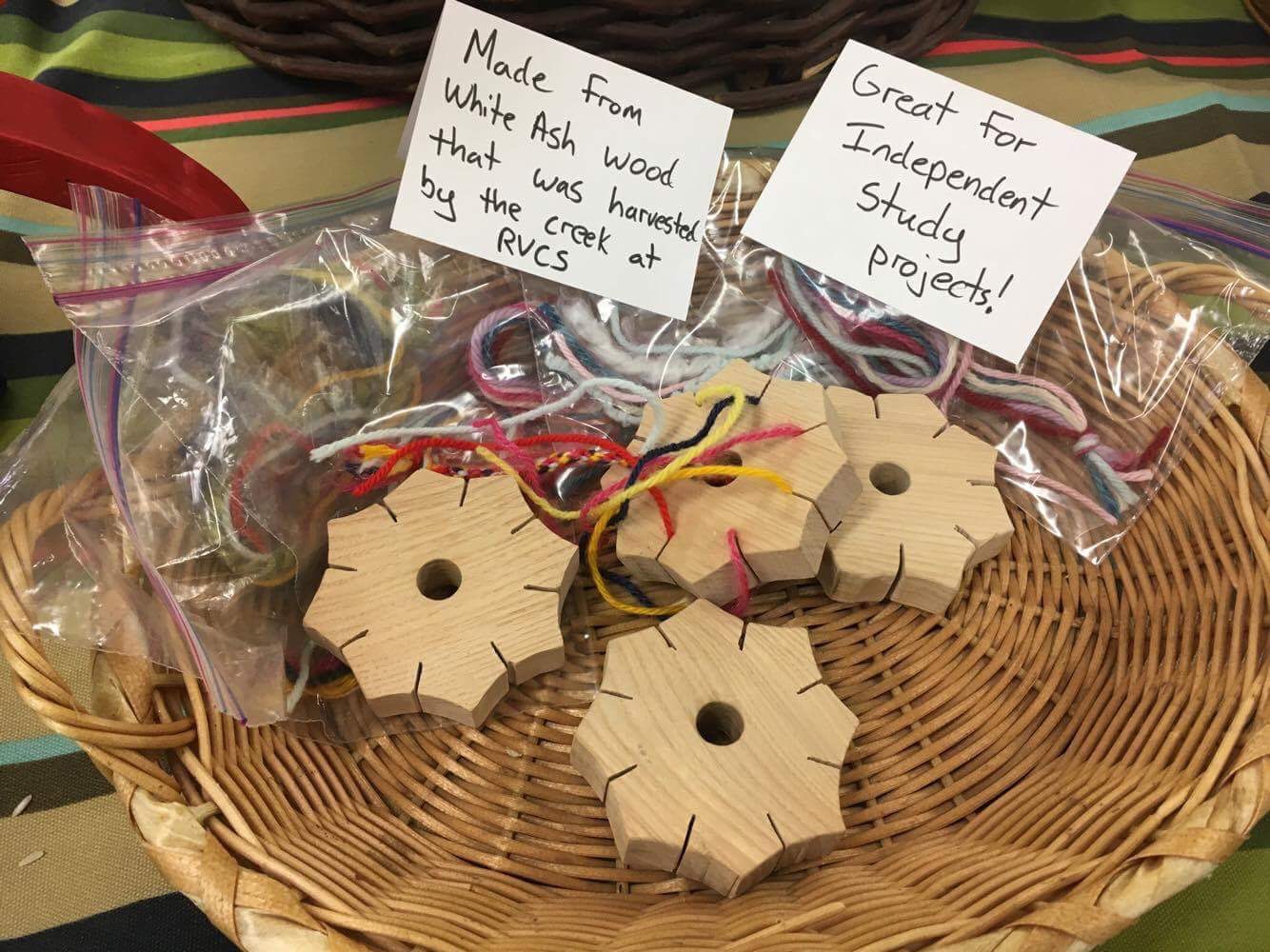
Ecological Literacy
Ridge and Valley Charter School believes that it is possible to create a more ecologically sustainable future and that our children have a right to a planet of pure air, clean water, a vibrant natural world and a more just and equitable human community.
In keeping with the mission of the school, the students wanted the items they made to be composed of natural, organic and locally sourced ingredients as well as donated items that could be reused and repurposed. They recognized that these items are more sustainable and better for the planet. Some of the materials even came from the school land.
Nova Market was a success!
The student-led market was a success with almost all of the items selling out. Their goal was to raise $300 however, the market was so popular that the students raised over $1000. There was a great sense of accomplishment and so much learned along the way.
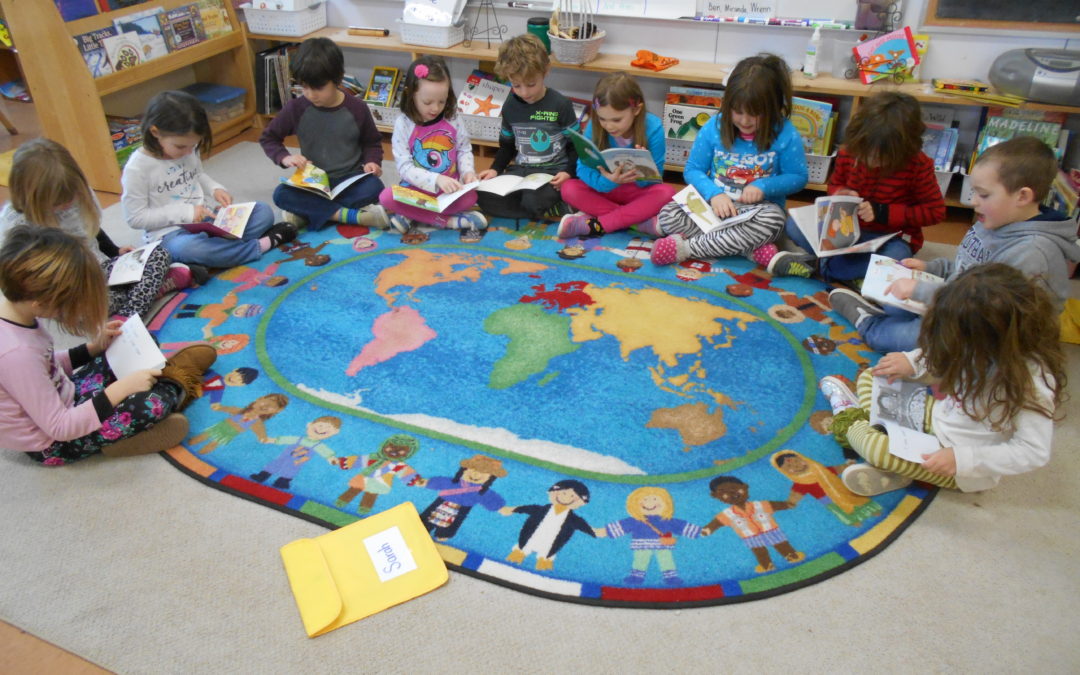
by RVCS | Feb 14, 2017 | Integrative Learning
From a young age students at Ridge and Valley Charter School develop a love of reading. There is a strong focus on becoming confident readers and writers. In a recent unit kindergarten students have been excited to use their reading “super powers” to help develop their reading skills.
Ridge & Valley’s Reading and Writing Model Inspired by Columbia University
At Ridge and Valley Charter School, a Reading and Writing Workshop model inspired by Columbia University‘s Teachers College Reading and Writing Project is used. There is a focus on developing students’ reading, writing and speaking skills within their own areas of interest. Doing so in the context of real and practical applications of those skills allows the learner to see the difference that their efforts can make. Instruction is embedded in content, topics and books chosen by the students and is differentiated based on their abilities. This model helps Ridge and Valley Charter School students develop a deep rooted strength in reading and writing that serves them well in high school and beyond.

by RVCS | Dec 5, 2016 | Integrative Learning
The governance model at Ridge and Valley Charter School (RVCS) is collaborative, circle-based modified consensus. Students, teachers, trustees, and families use the circle form for meetings, discussions, and decision-making in small and large groups and in committees.
The Circle, an Ancient Form of Meeting
The circle, or council, is an ancient form of meeting that has gathered human beings into respectful conversation for thousands of years and has served as the foundation for many cultures. What transforms a meeting into a circle is the willingness of people to shift from informal socializing or opinionated discussion into a receptive attitude of thoughtful speaking and deep listening. This practice is expanding widely into corporations, non-profit and NGO boards, education, healthcare, community activism, and religious communities as a highly applicable form of collaborative governance.
The Circle Way
Ridge and Valley Charter School has benefited from resources and guidance from mentors connected to the organization PeerSpirit, who train organizations in The Circle Way. This practice is a “body of work combining ancient lineage and modern social technology into a refined, lightly structured group process.” The two founders, Christina Baldwin and Ann Linnea, taught, applied and evolved this work in a worldwide 25-year writing and teaching cycle.
RVCS has refined its own circle practice through onsite trainings, study of the book “The Circle Way – A Leader in Every Chair,” by Baldwin and Linnea, and the informative PeerSpirit website (www.peerspirit.com). These tools have supported the evolution and development of school-wide practices of a foundational model of circle governance.
Circle-Based Collaboration Foster Relationships and Responsibility
The trustees and staff credit the responsibility and relationships fostered by circle-based collaboration to long-term success of the school. Both the children and adults seek to model the personal responsibility and mutual respect necessary to work in a circle of peers: to ask for what you need and to offer what you can, in support of the explicit shared intention of the group.
Ask students at Ridge and Valley Charter School what “circle” is and they will have a lot to share. They will say it is how they help to govern their classroom; that it is an opportunity for them to listen to new ideas while having a voice of their own. The Circle Way fosters a sense of confidence and empowerment in these students that they will carry on into adulthood.
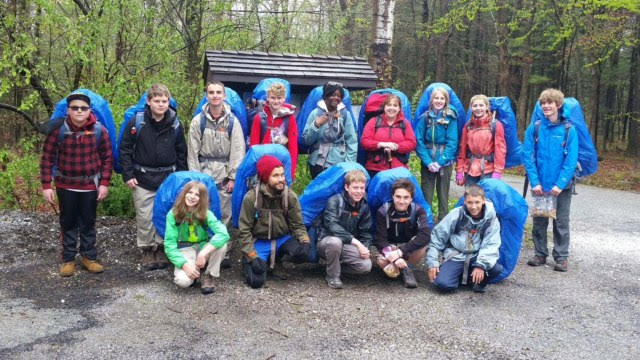
by RVCS | Oct 18, 2016 | Integrative Learning
Outdoor Overnight Expeditions: A Cornerstone of the Ridge and Valley Charter School Experience
Overnight and expeditionary experiences that are embedded into the curriculum, from kindergarten through graduation, offer some of the most important and exciting opportunities to Ridge and Valley Charter School (RVCS) students. Not only are these experiences a critical element in the development of self-confidence and a love of the natural world, but they also provide a rich, integrated way to learn and apply the skills and knowledge that the students are studying throughout the year.
Consider this quote from a study by the Association of Fish and Wildlife Agencies on this topic:
…the benefits of outdoor skills education [include] improved interpersonal and intrapersonal skills; environmental awareness and stewardship ethics; physical, mental, and social health; and ability to learn and concentrate.”
This is only one of many formal research studies that document the numerous and compelling positive outcomes that are a result of expeditionary types of experiences like the ones that are integral to the RVCS curriculum.
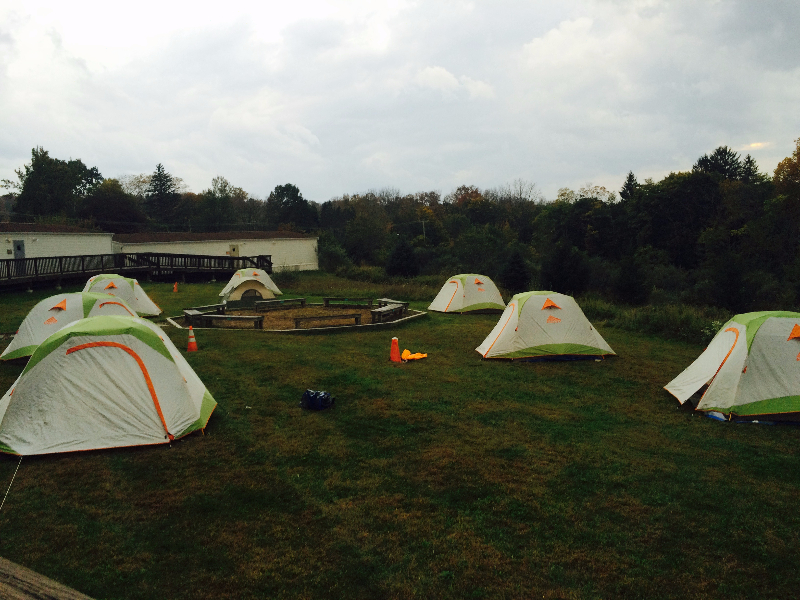
Benefits of Outdoor Overnight Expeditions
Many students often report that these experiences are the most memorable and life changing of all the experiences they have during their time at RVCS. This is not a surprise or a coincidence. The following is a list of many of the benefits of expedition style experiences:
- Confidence, self-esteem, maturity, self-awareness and independence
- The ability to be part of a team, to lead and be led (setting up camp, making sure everyone gets to the top of the summit, delegating and sharing in tasks, etc.)
- An ability to communicate with others day-to-day and under pressure (ensuring everyone in the team knows what is going on)
- An understanding of the importance of humility, empathy, compassion, gratitude and pride
- Organizing, planning and preparing
- Problem solving, flexibility, adaptability and initiative
- Skills to assess and manage risk
- Financial management, budgeting and the value of money (fundraising/planning for an expedition fosters entrepreneurial skills and gives real and relevant business experience)
- Knowledge to travel safely and responsibly
- Learning from mistakes
- Reflection and debrief reinforce everything that is learned
- Participants can use the expedition to provide evidence of personal key skills on college and/or job applications
- The lessons learned, cultures explored and environments visited during an expedition meet and go beyond the standards found within multiple academic content areas
Taking the Classroom Outdoors
We are fortunate to be located in an incredibly rich area in terms of natural and recreational resources. We have easy access to the Appalachian Trail, Delaware Water Gap National Recreation Area, the Paulinskill Trail, as well as numerous YMCA camps and outdoor centers. At RVCS, we continue to hone a developmentally appropriate, K-8 expeditionary scope and sequence of skills and experiences connected to the curriculum lenses for each academic year. Teachers, referred to as “Guides,” fold content and assessment into these experiences, building from one year to the next, so that by the time students graduate from RVCS they will have had a variety of overnight experiences and practiced a wide range of outdoor skills, all while engaged in content rich studies. Often times, due to the high engagement of the students, these experiences feel less like “school” or academic learning and more like fun adventures, thus on the surface and from an outside view their value may be overlooked.
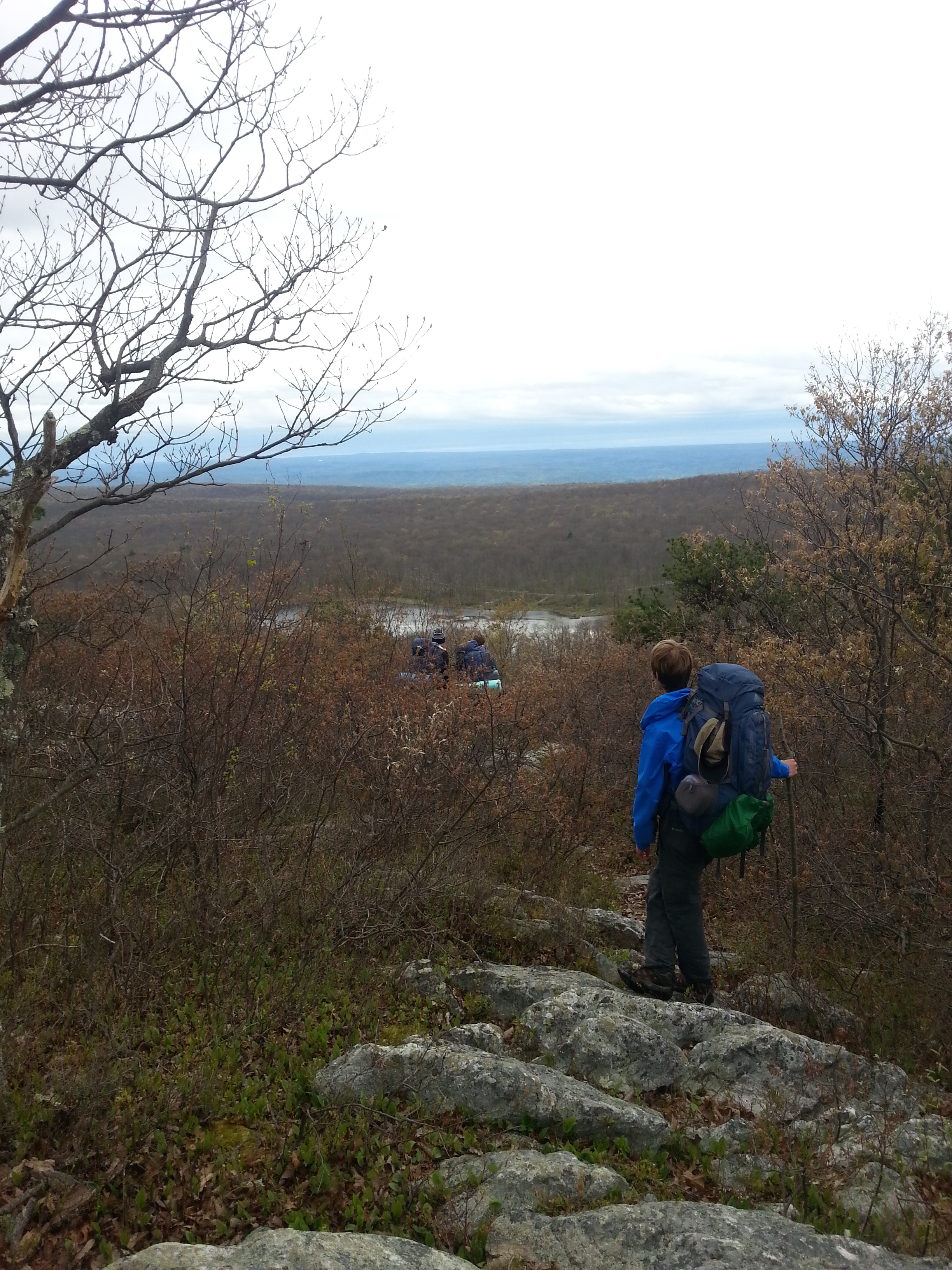
Planning for an Outdoor Overnight Expedition
A great deal of planning occurs behind the scenes prior to each expedition to allow for the students to have a safe, developmentally challenging experience. Guides are trained in the skills necessary to handle a variety of emergency situations and help facilitate a group working through the above mentioned challenges. Additionally, during each trip, there is consistent contact between trip leaders and emergency contacts back at RVCS to continue to evaluate and adjust for safety and/or changing weather conditions. This planning and on-going assessment of the group is what allows for these safe, but transformative experiences.
The Academic, Physical & Emotional Value of Outdoor Overnight Expeditions
Not only do students engage in experiences that address common core content standards for traditional academic areas, but they also practice and are assessed on a number of mission related goals and standards, as outlined in the RVCS charter agreement with the state of NJ. We are committed to not only teach common core content standards, but also demonstrate that we are achieving our own mission specific goals. The expeditions/overnights are a perfect medium for students to engage in these critical learning experiences, from the planning stage all the way through the trip debrief upon return to the school.
While the expeditions have a quality of adventure and fun, they can also be physically and emotionally challenging. This is as critical a part of the experience as the physical skills and academic content. Students of all ages are sometimes anxious about being away from family or, often in the older grades, the physical challenge of backpacking or dealing with uncomfortable weather conditions. These are all normal feelings and in the end add to the incredible sense of accomplishment that comes with facing and overcoming a challenge. While students prepare for the experiences over the course of the year, it’s not easy to simulate all of the physical and emotional challenges that will actually occur on an expedition and this experience with a real-world challenge actually adds to the overall value of the experience. It is not uncommon for students to struggle somewhat, either individually or as group, during parts of the trip. It’s often that feeling of elation at overcoming an obstacle that solidifies the experience for the student. These types of breakthroughs are incredible moments that we hope all students have at some point during their RVCS journey.
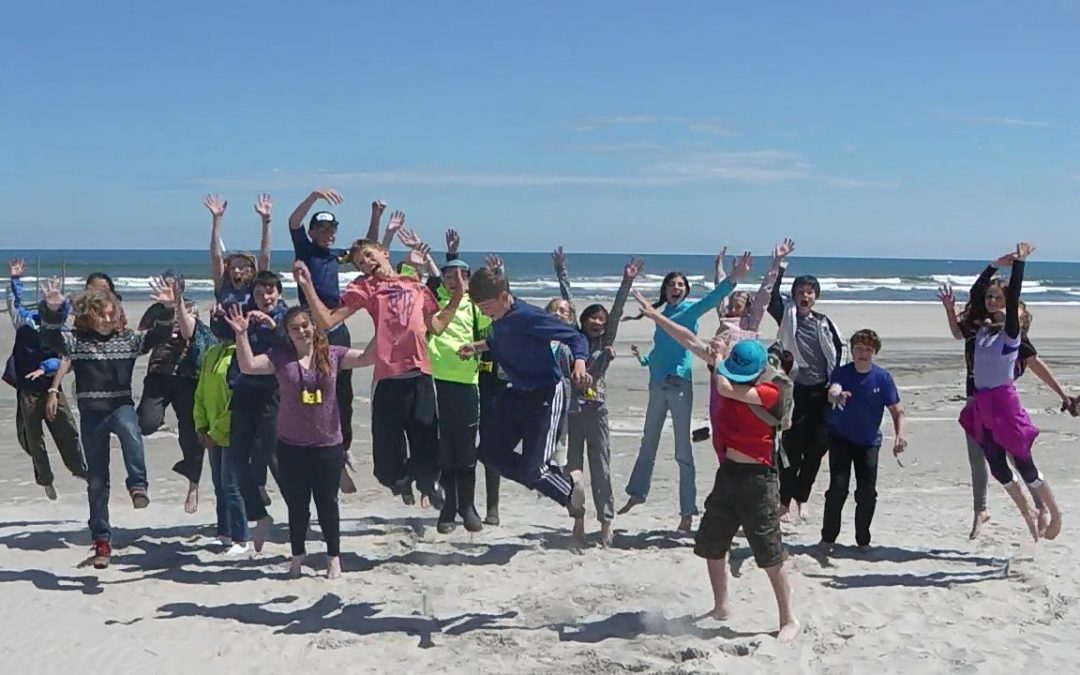
by Dan Egan | Jul 5, 2016 | Integrative Learning, Natural World
Sixth and seventh grade students from Ridge and Valley Charter School (RVCS) went on a service learning expedition recently to the Delaware Bay. The students volunteered with the American Littoral Society and the Western Hemisphere Shorebird Reserve Network. Expeditions such as this are an integral part of the RVCS curriculum.
Service Learning as Extension of Students’ Work
This service learning expedition was deeply rooted in the students’ work throughout the year. Their studies included collecting information through research, formulating opinions and arguments, identifying counter-arguments and rebuttals, understanding natural history, collecting and analyzing data, exploring culture, civilization, and how we as humans use resources, as well as fostering a growth mindset leading to a better understanding of “Who am I as a learner, and as a human being?”
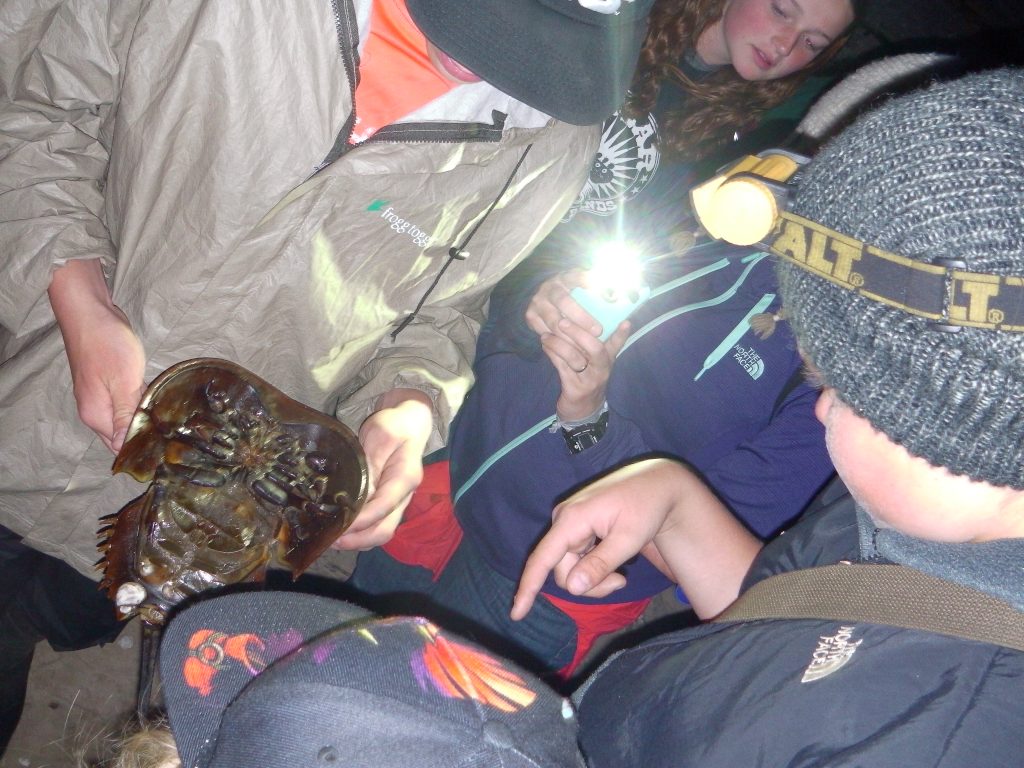
Students Work Alongside Professionals
While on the overnight service learning expedition, students became citizen scientists working side by side with professionals from the American Littoral Society, whose mission is to protect marine life, protect the coastal ecosystems from harm, and to empower others to do the same. They also worked with professionals from the Western Hemisphere Shorebird Reserve Network, whose mission is to conserve shorebirds and their habitats through a network of key sites across the Americas.
Tagging Horseshoe Crabs
Student scientists worked in small groups to tag horseshoe crabs over two nights. After drilling to create a small hole in the side of the horseshoe crab’s carapace or shell (the crabs don’t have nerves in the shells) students installed a white, round tag with an identification number and contact number. These are used to track the migration of the crabs from night to night and spawning season to season. It allows scientists to better understand whether crabs prefer to return to the same areas to spawn or if they move more freely up and down the eastern coast.
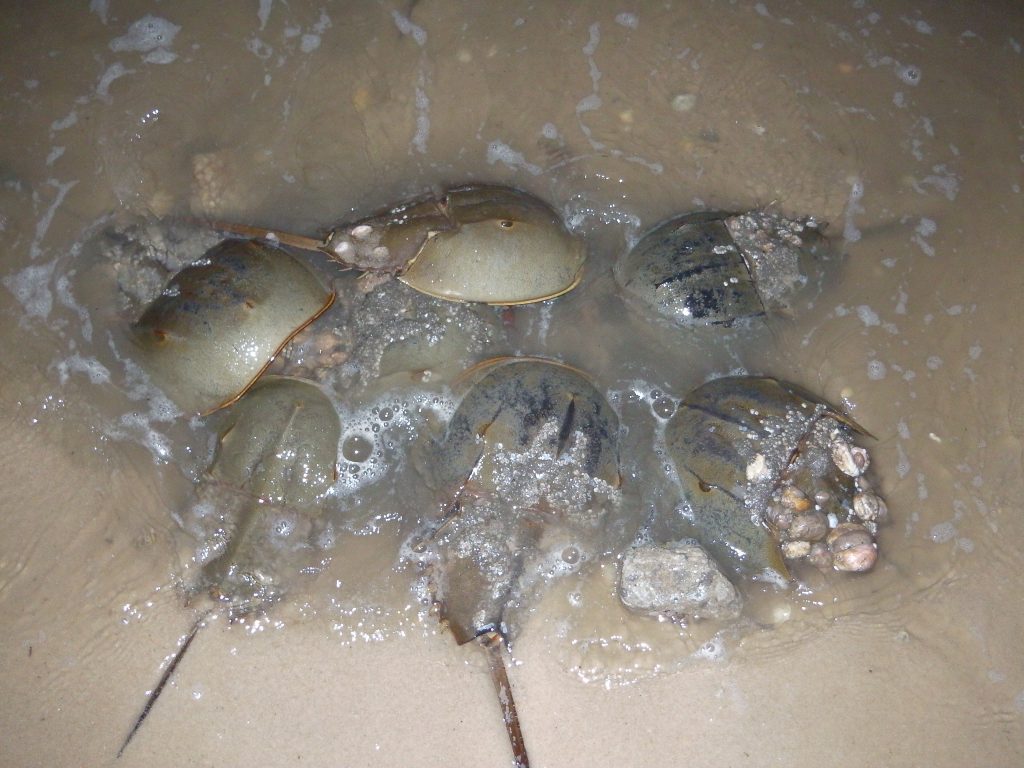
Measuring the Horseshoe Crab Population
As well as tagging crabs, student biologists used square meter quadrats and a measuring rope marked off in meter measurements to collect information on how many crabs are coming onto the beach during the mating season. This data, collected by a representative from the Western Hemisphere Shorebird Reserve Network, will be submitted to the U.S. Fish and Wildlife Service in an annual report to further analyze the population of the horseshoe crabs and monitor trends in their recovery from near extinction (90% decrease in population during the 1990s and early 2000s).
Throughout this important service learning work, students also combed the beach, flipping crabs who were stuck upside down and who would otherwise likely die in the heat of the day, while scanning for previously tagged crabs, documenting their identification number, gender, and physical health, including any visible injuries. This data, too, will be submitted with the census to the Fish and Wildlife Service.
Exploring the Cape May National Wildlife Refuge
Each student exemplified maturity, leadership, and professionalism during their 2-3 hour long evening service learning volunteer sessions. During the day, students and their teachers (referred to as “Guides” at RVCS) traveled to the Cape May National Wildlife Refuge on the Atlantic Ocean, just south of Wildwood Crest. Students scanned the beach for shorebirds, observing semipalmated sanderlings, semipalmated plovers, and an American oystercatcher. The students also spent some time running along Two Mile Beach, just south of the refuge, discovering horseshoe crabs buried in the sands along the high tide lines while exploring the tidal pools for shells, crabs, and a starfish.
Post Service Learning Expedition Observations
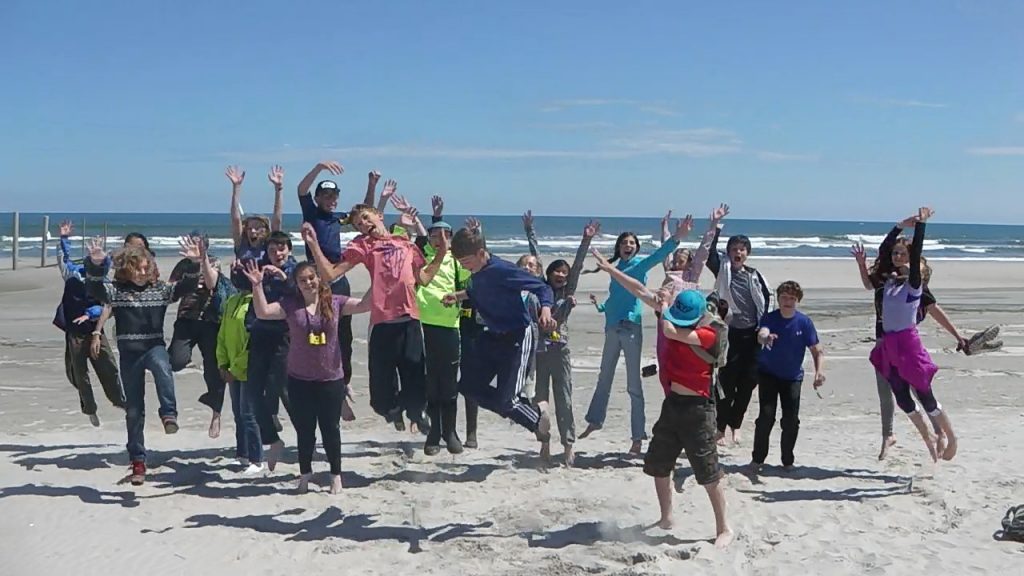
After the service learning trip, one of the students spoke about their experience in this way,
I have been challenged by stepping outside of my comfort zone and working with people that I don’t have a lot of experience with. I have learned that the people in the community and local environment are very patient and caring. I have learned that I want to do more work like this over the summer and when I’m older helping marine life and endangered species. I think the most important thing I learned is that I am making history right now and that every thing I do has an effect.
The Delaware Bay service learning expedition was not only educational, but was also an experience these students at Ridge and Valley Charter School will never forget.
by RVCS | Feb 6, 2016 | Integrative Learning
Integrative learning is a cornerstone of the Ridge and Valley education. Students learn by doing and subjects are interwoven. Here students continued their study of Colonial America by researching, designing and then creating a food storage system on the school property.
